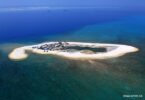Central Working Development Party (CDWP) has once again deferred the approval of Railway Division PC 1 for the upgradation of Karachi-Peshawar 1780 kilometer railway line ML 1 project. Planning Ministry did not agree to the financial and economic analysis provided in the PC 1. Deputy Chairman Planning Commission has asked for third party review of cost estimate, for which the World Bank (WB) has been requested. Initially, the cost of this mega project was estimated $8.2 billion but it was revised to $9.2 billion.
Railway track upgradation project was declared strategically important by Pakistan and China and it would be implemented by acquiring Chinese loans. However, multilateral lending agencies including the World Bank and Asian Development Bank had raised debt sustainability issue on the basis of cost benefit analysis and suggested governance reforms in Railway. Multilateral donors have rightly pointed out debt servicing problem of ML 1 as foreign debt of the country has shot up to $ 90 billion and debt rollover is being sought for the loans, which are maturing for repayment. Pakistan would be seeking rollover of $14 billion foreign debt out of $28 billion which are maturing during the next three years in the upcoming meeting of Bretton Woods Institutions, which will also discuss the possibility of writing of loans to member countries.
The initial cost of mere railway track upgradation and refurbishment appeared on the high side. Railway Minister, Sheikh Rashid Ahmad had referred to it in an interview with female TV anchor Gharida Farouqi in December, 2018. Now the cost of the same project has escalated by $1 billion.
A cost effective, phase wise, plan had been approved for mainline railway track modernisation along with assembling of diesel electric locomotive engines in 1985. Work on setting up locomotive factory was started at Risalpur near Nowshera in Khyber Pukhtunkhwa with financial and technical of Japan and it became operation in 1990. But after the dismal of Muhammad Khan Junejo government and succeeding PPP government shelved railway track upgradation plan. In the first two PML N governments, railway was utterly neglected and major focus was on building motorways. ML 1 project was conceived in PML Q government. However, the MoU of the project with inflated cost was signed in the last PML N government.
In majority of countries of the world, goods trains make this public utility organisation profit earning as passenger traffic incur losses. In Pakistan road transport lifts bulk of the goods trade. Hence railway is huge losses incurring entity. It will take a number of years when economy will break the recessionary cycle and special economic zones will become functional, leading to substantial increase in goods transportation by freight trains.
Over the past 12 years locomotive factory has become almost non-operational and is plagued by redundancy. The valuable technical infrastructure could not be utilised for assembly of locomotives, manufacturing of parts and components and repair of defective locomotives. The WB emphasis on governance reforms in Railway is also worth consideration in view of its recurring losses. For the retirement of foreign debt, it must be a profit earning entity.
The frequency of train accidents has increased over the past few years due dilapidated railway track and faulty signaling system. The bridges on rivers and canals, through which the track pass, had been built in British era, which pose risk of caving in under the load of both passenger and goods trains. A cost effective phase wise plan for railway modernisation is inevitable instead of acquiring huge foreign loans for railway track upgradation to avoid debt servicing issues.






